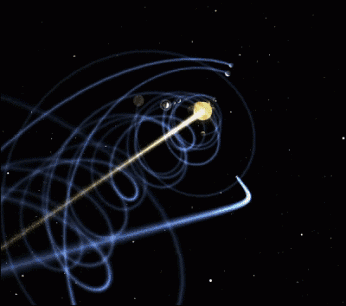In the age of GPS, space tourism, and livestreamed sunrises from every time zone, it’s almost unthinkable that Flat Earth theory still exists, let alone that it’s thriving. But a surprisingly dedicated group insists that our planet is less “blue marble” and more “cosmic pancake,” and just when you think it’s harmless internet folklore, you discover that some of its loudest advocates are highly educated people: yes, people with actual degrees (some in science) have decided the spherical Earth is a hoax. So suddenly, this isn’t just an amusing oddity; it’s a cultural phenomenon worth paying attention to.
The idea that the Earth is round isn’t exactly new. Ancient Greek philosophers like Pythagoras figured it out using nothing more than shadow angles and basic geometry, and it’s one of those truths that seems both obvious and invisible: intellectually accepted, yet rarely felt, since most of us don’t go about our day thinking, “Ah, yes, what a lovely day on this oblate spheroid.” The illusion of flatness is so persuasive that standing in the middle of the Australian outback or Kansas prairie can make you wonder if maybe, just maybe, the mapmakers got a little creative.
Still, the evidence is overwhelming: ships disappearing over the horizon, time zones that only make sense on a curve, photos from space, not to mention the mildly annoying but useful globe in your classroom. You don’t need to be a scientist to list a few. Yet despite this, some people still cling to the idea that we live on a flat disc, and it turns out, their belief has less to do with physics and more to do with psychology.
People aren’t rejecting science so much as they’re replacing it with something that makes them feel more in control, since Flat Earth theory gives structure to chaos, certainty to confusion, and (let’s face it) a quirky community to join. It speaks to our deep human needs, the desire to understand the world even wrongly. to feel empowered in a confusing society, and to belong to a group that seems to have “figured it all out.” So the Earth, in this model is not just flat, it’s human-centered, intimate, and immune to the intimidating infinity of space and it becomes the universe’s equivalent of a snug blanket fort.
And of course, the internet has given these ideas a rocket booster: YouTube, TikTok, Facebook, they’re not just social platforms and they’re echo chambers with algorithms. A person searching for “Why are sunsets red?” can, in three clicks, land in a video explaining how airline windows are curved to create the illusion of roundness. It’s all part of a master plan, apparently. Once in that echo chamber, community forms quickly, people bond, they share memes, they make documentaries, and some even organize flat Earth cruises (which, ironically, rely on round-Earth navigation systems).
At first glance, it’s hilarious, but then it gets troubling, since these flat Earthers aren’t isolated; they mingle with other science-skeptical movements: vaccine denial, climate change conspiracy, alternative history, all have found common cause in a shared mistrust of “the system.” There’s a real danger here, not that governments will start building edge-of-the-world border fences, but that science itself becomes optional, because when facts feel like opinions and truth is up for auction, serious consequences follow.
The most dangerous part isn’t the belief that the Earth is flat; it’s the method of believing: cherry-picking data, mistrusting expertise, and forming opinions based on vibes rather than evidence is a recipe for disaster, no matter the topic. Whether it’s flat Earth, anti-vax ideology, or denying climate change, these are less “theories” and more carefully curated worldviews designed to validate suspicion.
Until recently, most of us didn’t think we’d have to argue about whether Earth has corners, but here we are, and the response can’t just be fact-dropping and rolling our eyes. Combating this rise in reality rejection means improving education, not just in content, but in mindset. So teaching critical thinking, curiosity, and how to distinguish between a peer-reviewed study and a guy yelling on YouTube might be our best defense, and if people understood why they believe what they believe, they might also understand when to stop.
Which brings us to the question: how do you convince someone who’s absolutely sure the Earth is flat that they might be wrong? You probably don’t, but you can encourage wonder, you can encourage skepticism, not of science, but of easy answers. And most of all, you can keep telling the truth, with patience and maybe a dash of comedy.
Author’s Note (Before We Fall Off the Edge):
I don’t actually think anyone is going to build a flat Earth foreign policy. Though given the past few years, I wouldn’t put money on it either. Still, I do think the urge to believe in tidy lies over messy truths is very human because we all want a world that makes sense. But sense-making should never come at the cost of reality. That’s not enlightenment, that’s improv with a tinfoil hat. And no matter what the flat Earthers say, I’m not packing a parachute for my next flight to Tokyo. I’ll take the curve.

The planets in our solar system orbit the Sun in elliptical paths, held in place by the Sun’s gravity, each moving at its own speed and distance. But this whole planetary ballet is happening on a moving stage: the Sun itself is racing through the Milky Way galaxy at about 450,000 miles per hour, pulling the entire solar system along for the ride. So, while the planets circle the Sun, the Sun is also orbiting the center of the galaxy, and together, everything is in constant motion.


Leave a Reply to Mari Cancel reply